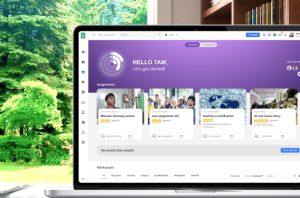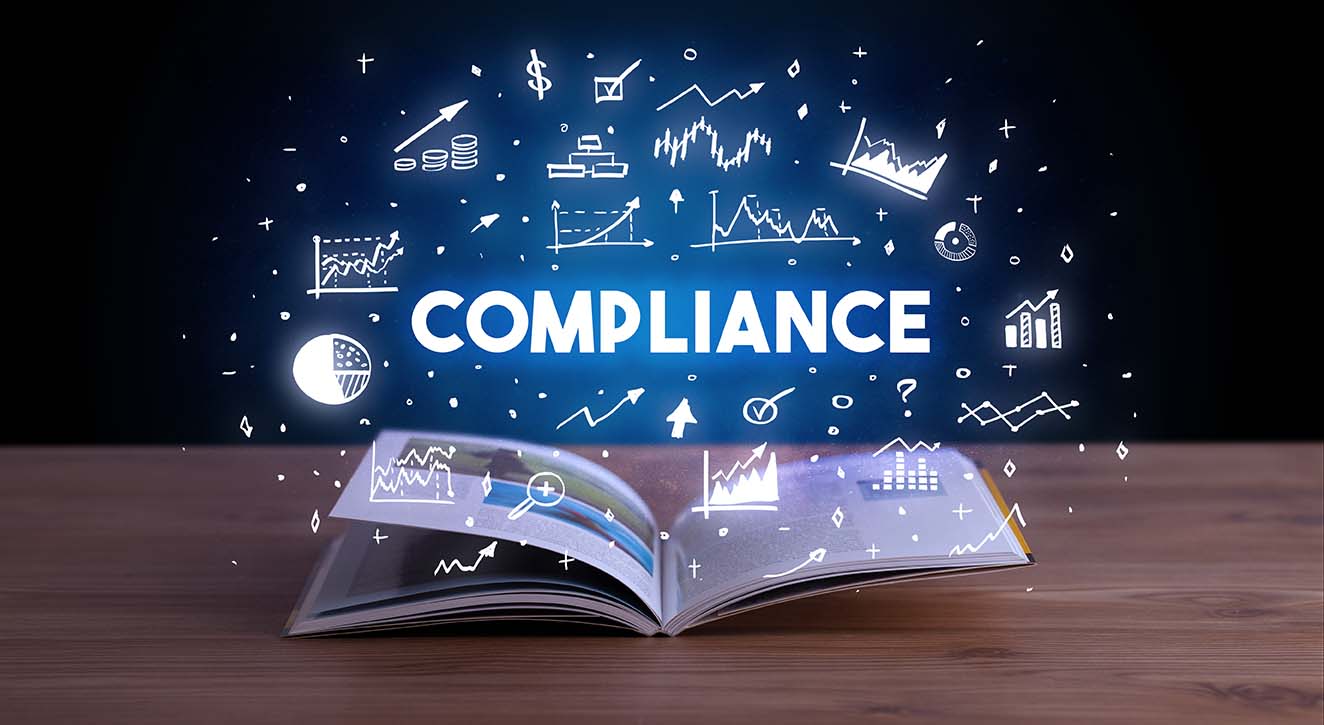Discover ten barriers to learning L&D Managers face and learn how to overcome them. Inspire, engage, and motivate your employees to succeed and flourish.
Learning is critical to success. How people grow, and progress makes a huge difference for individuals and their employers.
However, engaging and motivating learners is hard work. Not only do learning and development (L&D) managers need to provide value with often limited resources, but they also need to tackle a range of challenges that prevent people from learning new skills.
Modern business leaders view L&D teams as partners and a critical function of their business strategy–prioritizing budgets and resources to upskill and reskill employees to stay competitive.
Make your learning programs successful and rewarding. Discover ten barriers to learning L&D Managers face and learn how to overcome them. Inspire, engage, and motivate your employees to succeed and flourish.
We’ll cover:
- The current L&D landscape
- Why is it important to break down barriers to learning?
- What prevents people from learning new skills?
- Break down barriers with Blossom
The current L&D landscape
The global L&D market is worth $367 billion and is expected to grow annually by 3-4% in Europe by 2025. But what is driving that growth?
Firstly, the COVID pandemic resulted in a seismic shift in how L&D managers offer learning and development programs. Many workplaces that had traditionally been in-person environments had to become entirely online.
L&D teams had to change how they deliver training to meet the needs of a diverse workforce by adapting their usual processes to become more fluid.
Considering remote and hybrid working patterns have increased significantly over recent years, the number of people working flexibly shows no signs of slowing down. In fact, 84% of workers who had to work from home because of the pandemic plan to continue hybrid working.
Secondly, L&D spending remains optimistic. Although the amount has dipped slightly, the L&D budget outlook remains somewhat reassuring.

Finally, digital transformation has accelerated the need to rethink how L&D is provided. L&D managers that invest and embrace new technology, such as technology-enabled training solutions (AI) software, to enhance learning will succeed in their efforts.
In a world that’s constantly learning, evolving, and innovating, L&D managers face considerable challenges preventing them from accomplishing their goals.
We will explain some of those difficulties later on and offer practical tips for overcoming them.
Why is it important to break down barriers to learning?
Since 30% of UK workers say they have not received formal workplace training in the last five years, it’s clear that removing barriers remains challenging for organizations.
Worldwide, nearly nine out of ten companies are facing a skills gap. With more businesses focussing on skills-based hiring rather than on a candidate’s qualifications or previous work experience, L&D programs are vital to addressing the gap in skills and increasing employee engagement. As a result, organizations can attract new talent, retain employees, and help people achieve greater job satisfaction.
Breaking down barriers to learning has enormous benefits for both the employee and the employer. We’ll let the data speak for itself:
- Increases career opportunities. The number one motivator for employees is the opportunity for career growth. Since great leadership is a valuable asset to any business, developing delegation skills, for example, can help people advance to higher positions.
- Reduces employee churn. Some 69% of employees intend to stay with their employer when they believe they can grow and develop their skills.
- Encourages internal mobility. Employees who had an internal move stand a 75% better chance of staying with their current employer.
- Supports well-being. Some 62% of people feel there is ample opportunity to learn the skills and knowledge to do their job well. Learning opportunities and communicating with peers are great ways to help people cope with work difficulties.
- Increases employee engagement. Only 21% of people are engaged at work. Creating a culture of continuous learning can shift employees’ thinking so they understand that education is ongoing, not a single occurrence.
- Improves resilience skills. Skill sets for jobs have changed by around 25%–this number is expected to double by 2027. Resilience helps people tackle tough problems such as the cost of living crisis, navigate the job market, or cope with environmental issues like political unrest.
- Improves job satisfaction. Happy employees are 13% more productive. Learning and development opportunities create a sense of achievement.
What prevents people from learning new skills?
L&D Managers help build an efficient workforce by developing and shaping talent–optimizing the work environment by upskilling and reskilling employees.
Given that your people are the most significant contributor to success, some barriers prevent employees from fully engaging in learning.
1. Lack of awareness
There’s a well-known phrase: “You don’t know what you don’t know.” A lack of knowledge about learning and development opportunities prevents employees from thriving.
People with no self-awareness to improve their lives stay stuck–stifling growth in their personal and professional lives. Staying in the same job for a long time and doing the same tasks repeatedly can feel meaningless.
Remove barriers to learning by:
- Empowering people to make personal goals. Involve them in decision-making, so they take ownership and responsibility for making positive changes.
- Encouraging those with poor self-awareness skills to learn from their peers. Promote teamwork using friendly collaboration tools, such as company intranet pages with healthy competition.
- Using your existing communications platforms like Slack and Asana to share upcoming training events. Promote early engagement by encouraging employees to sign up or find out more.
2. Toxic work culture
Poor work/life harmony, disconnected employees, and bad management are some traits of a dysfunctional workplace.
Organizations that devalue learning and development suffer the consequences. According to a recent report, toxic workplaces continue to drive the Great Resignation. What’s more, it’s actually the toxicity that makes employees resign–and not pay.
Plus, some employers don’t recognise and value its top performers. They keep first-rate employees in low-level positions with no opportunity to advance.
Nonetheless, improving a toxic workplace takes time. But, L&D managers are well-placed to build a better environment and are part of a collective approach to improvement.
Remove barriers to learning by:
- Laying the foundations for developing a more robust learning culture. As poor leadership is often the problem, start at the top by offering training programs that improve leadership skills.
- Keeping learning and development front and center of all policies. Have an L&D representative attend strategic meetings to share their knowledge and remove barriers.
- Building a democratic organization and encouraging a growth mindset. Simplify how learners view and access learning with easy-to-use and intuitive user interfaces. Blossom offers modular and customizable user interfaces tailored to your needs.
3. Lack of personalisation
Successful training programs don’t have a one-size-fits-all approach. Offering restrictive and inflexible learning can demotivate and disengage employees. In fact, learning events that are adaptive and consider individual learners’ needs get results.
Why?
Because personalizing the learning experience removes barriers. L&D managers that consider individual learner needs, for example, caring responsibilities, shift patterns, and accessibility issues, improve participation and enjoyment. It’s why 75% of L&D professionals say they will develop more custom learning content in the upcoming years.
Remove barriers to learning by:
- Analyzing the ROI from current training programs. Use metrics from learner evaluation tools to identify how to improve personalized learning. Learners usually have great ideas you can implement too!
- Offering a range of training programs suited to each employee. Asynchronous learning, for example, allows team members to learn on their own time versus attending a scheduled face-to-face or virtual training session.
- Providing a rich learning experience by creating engaging presentations, documents, and templates for your lessons and courses.
4. Unmet physical and mental health needs
Diverse learners often have different needs when it comes to learning. Individuals’ abilities, skills, values, and cultural needs significantly impact learning outcomes.
Let’s take neurodivergence, for example. Neurodivergent learners process information differently from non-neurodivergent people. L&D managers can support and guide employees to feel focused and ready to learn.
Equally important is making sure the physical needs of learners are met. If you have ever attended a course with inadequate lighting, space, ventilation (heating or cooling), or refreshments, you’ll know what difference it makes to learning. A poor learning environment can prevent people from hearing and understanding the trainer and gives them a negative experience.
Finally, digital transformation can be great for L&D teams. However, it can be a hindrance for learners. Think about the skill set of learners. Not everyone will be conversant with technology and software.
Remove barriers to learning by:
- Creating a toolkit of strategies that promote inclusivity and diversity. Including time for moving around during face-to-face training can help learners with ADHD by making them feel more comfortable.
- Considering the learning environment. Ensure employees are set up for a great learning experience by creating an atmosphere conducive to acquiring new skills.
- Offering a range of technology to meet learners’ different needs. Don’t assume everyone has the same level of IT skills or connectivity to the internet as everyone else. Set people up to succeed and assess IT skills and access to the internet.
5. Resistance to change
Change is inevitable. Fear of the unknown creates anxiety, resulting in employees staying where they are and lacking progression.
Advances in technology, changes to business priorities, or management structure can create serious challenges for learners. Adapting to new ways of working can be daunting.
L&D managers that understand how change affects learners can successfully engage and influence learners to participate in learning programs.
Remove barriers to learning by:
- Finding the root cause for resistance to change. Have open and transparent discussions with learners to determine what drives the resistance. You may find a simple solution that works by providing additional information.
- Staying positive. L&D managers who are upbeat about changes in the workplace can influence other people. Share some positive aspects of new working methods and how learning new skills can help employees enjoy their new work environment.
- Being honest. Listen to how learners are feeling. Sharing your own fears can increase trust and build great relationships with learners.
6. Learning styles ignored
One of the most prominent barriers to learning is ignoring how people learn best. A significant part of L&D teams is to adjust learning and development programs to cater to learning styles.
Visual, auditory, kinesthetic, and reading or writing learners have preferences in interpreting, understanding, and storing information. An auditory learner, for example, learns best through watching videos or listening to others. In comparison, a learner with a preferred kinesthetic style will learn best through activities, such as role-play, where practicing skills are better suited.
Some learners already know their learning style from previous training or school. Even knowing their learning preferences, seven in ten learners still need to employ study techniques supporting those preferences.
The best organizations accommodate each learner’s strengths, ensuring they genuinely grasp the information and increase their knowledge.
Remove barriers to learning by:
- Assessing learning styles ahead of lesson planning or creating new training programs.
- Grouping learners with the same learning styles together. Give them the opportunities to connect with each other, the topics you’re teaching, and how they participate with the rest of the group.
- Using comprehensive analytics to identify how L&D leaders can improve operational performance, such as catering to learning styles. Software like Blossom will give you actionable data on L&D performance.
7. Negative previous experience
Did you know that past experiences often influence future decisions? Negative situations in school, such as poor teaching and peer pressure, can adversely affect how learners engage with training as an adult.
Some learners find training too difficult. Often made worse by accessing previous learning aimed at a different level of expertise, not relevant or engaging stays in a learner’s mind.
When employees have previous bad experiences with training, it can set them up to fail by avoiding future training events or devaluing workplace learning programs.
Remove barriers to learning by:
- Listening to concerns and adopting a “seek to understand” approach. Listening to bad experiences can make people feel heard and understood–allowing them to move on and be willing to undertake new experiences.
- Creating a learning environment where previous learning experiences are shared. Learners with similar experiences can connect and support one another to succeed.
- Helping people understand how self-limiting beliefs impact their development. One-to-one support, for example, can give learners encouragement and time to work out how to challenge their thinking.
8. Fear of failure
Another common barrier L&D managers face is the fear of failure. This can hinder learners from actively engaging in conversations about their development or taking risks to upskill.
Giving and receiving feedback is a standard part of learning. Although constructive feedback given positively can be enabling, if not handled correctly, it can lead to continual feelings of failure.
Considering 70% of UK students say the thought of failure affects their future plans, finding ways to overcome feelings of defeat is a task all L&D managers need to prioritize.
Remove barriers to learning by:
- Empowering learners to have a growth mindset and see mistakes as essential learning opportunities. Give meaningful feedback to help build self-confidence.
- Creating a supportive learning environment that encourages testing new ways of learning without fear of reprisal. Support learners to view feedback positively.
- Offering a range of activities that focus on giving and receiving feedback. Give people the tools they need to see criticisms as an excellent way to self-improvement.
9. Lack of time
Distractions are everywhere. But with good time management skills, it’s easier to avoid various distractions each day.
Busy schedules, constant multi-tasking, and poor prioritization skills impact everyday life. Managing time effectively is a key skill that will help learners keep up and in control at work. That said, two-thirds of people feel their workload is out of control for at least three days per week.

Furthermore, if your organization has a younger workforce, they’re likely struggling to manage their time efficiently. According to the data, 88% of college students wish to improve their time management skills, and over half think better organizational skills would enhance their performance.
Remove barriers to learning by:
- Making time management skills a long-term goal for all. Offer dedicated training to help new and existing learners improve their time management skills.
- Encouraging learners to improve their time management skills through one-to-one discussions or group activities. Support learners to map out what tasks are most urgent and essential.
- Simplifying routine learning processes, such as joining instructions or learner evaluation tools. Don’t let people jump through hoops with time-consuming processes to sign up or give feedback.
10. Lack of employer support
Business leaders make tough decisions to survive. Striving for strategic ways to reduce budgets while meeting demand and staying competitive can often mean reducing departmental budgets.
Insufficient funding for employee training and development can affect your L&D offer. A ‘do more for less’ approach can result in limited access to learning opportunities within the workplace -affecting the skills of new and existing employees.
Plus, departmental managers play a huge role in L&D. Employees who want to increase their skills may need more support and encouragement from managers. This can affect staff morale and job satisfaction.
With the number of employees feeling their current employer cannot meet their career goals, there needs to be a renewed commitment to L&D from middle management.

Remove barriers to learning by:
- Implementing a mentoring program. A low-cost way of upskilling and sharing knowledge between employees.
- Prioritizing L&D activities where the ROI is highest.
- Developing a strategy to increase awareness of how lifelong learning is integral to employee values.
Break down barriers to learning with Blossom
Learning is a transformative experience. People skills, abilities, and talent are at the center of organizational success, and quite rightly so.
Consider the barriers we’ve listed here and put proactive measures in place to remove anything that prevents employees from learning. Ensure your employees are fully engaged in their learning process. Help them learn the right skills at the right time and for the right reasons, and hold on to what they know.
Ready to learn more? Start building a better learning environment by breaking down barriers with Blossom. Schedule a demo today.









